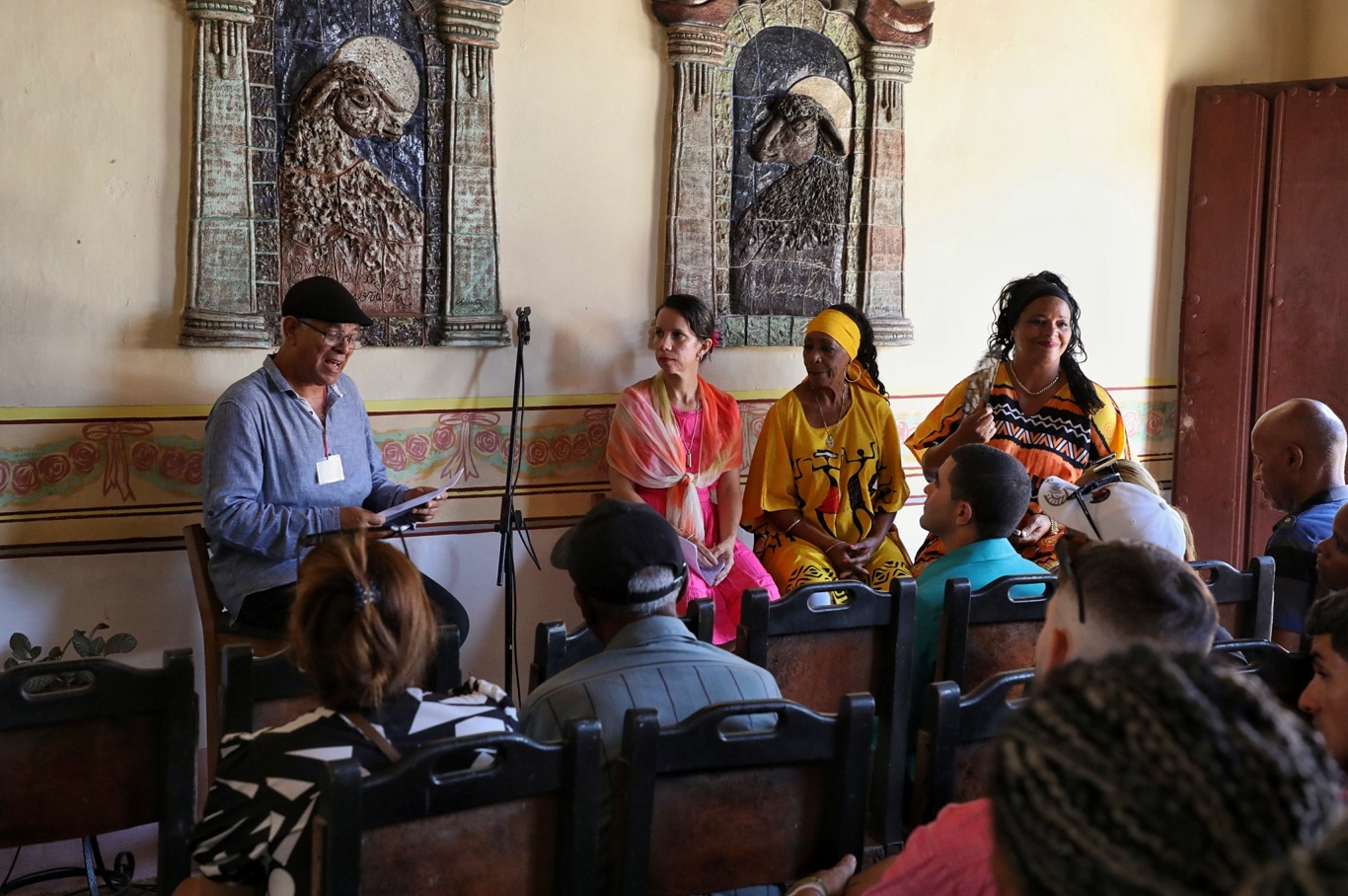
Camagüey, May 9 – The XXXIII edition of the Provincial Music Party kicked off in Camagüey with a panel dedicated to the Caribbean musical presence in the territory, focused on the Haitian heritage still alive in local artistic expressions.
Moderated by Néstor Olazábal, provincial director of the Houses of Culture system, the space brought together the musicologist Heidy Cepero and the singers Teresa Romero and Marina Collazo, leaders of the renowned Desandann choir, made up of Haitian descendants.
The exchange highlighted the research, preservation and reinterpretation work that has been done in Cuba regarding Haitian music, especially through groups such as Desandann and the carrier group Caidije.
Cepero, who has researched Caidije's work, highlighted that "the music has maintained its deeply rooted Haitian rhythms. They have maintained their tradition in a respectful manner," and praised Romero's work as an arranger, "for the complexity of transferring the richness of the instruments to the tessitura of the voice."
For her part, Teresa Romero recalled the founding of the Desandann choir, remembered its first director, Emilia Díaz, and singer-songwriter Marcelo Andrés, and recounted her experience visiting Haiti, where she was able to connect directly with the ancestral culture that inspires their repertoire.
"For me, it has been a very beautiful experience," Romero affirmed. The singer emphasized the need for rigorous study, as 101 Haitian rhythms have already been identified, and the group intends to further expand its repertoire with new pieces.
One of the most emotional moments of the panel was the testimony of Marina Collazo, who evoked her roots in La Caobita, Santa Cruz del Sur. “The songs we have developed in Desandann I knew as a child,” she said.
For her, the choir is “a school and a family,” an expression that synthesizes the spirit of oral transmission that has kept this music alive on Cuban soil.
Cepero, Romero, and Collazo all agreed in advising the audience—made up of art instructors and cultural promoters from the thirteen municipalities of Camagüey—to see, feel, and delve deeper into the richness of Haitian music that has settled in Cuba, as a way to recognize and value the country's cultural diversity.
The initial panel of the Party is part of a celebration dedicated to the art instructor Arbelio Marín Padrón, a reference of a generation still active in the Houses of Culture system.
The province has more than 600 art instructors, many of them directly involved in community work from homes and schools.
In this edition, 32 works compete in the event's central competition, with 10 participating; only Santa Cruz del Sur, Vertientes, and Nuevitas did not submit proposals.
The formal opening took place with the performance of the Mariachi Nuevos Aires, a group in which Arbelio Marín also works as a guitarist.
The Provincial Music Party not only stimulates creation and amateur talent, but also opens space for necessary dialogues about the musical heritage that makes up the Cuban cultural identity, as was demonstrated on this day. (Text and photo: Yanetsy León González/Adelante Digital)